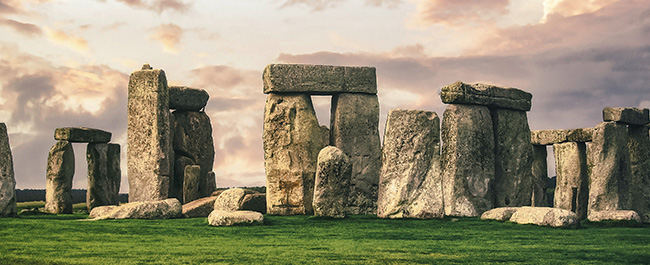Transforming interpretation of prehistoric religion

Bristol's research has influenced English Heritage strategy and increased visitors to Stonehenge.
Research highlights
- Created a new model for open-ended interpretation of prehistoric religion and monuments.
- Increased visitor numbers and engagement at Stonehenge.
- Enhanced strategies and practices across English Heritage sites.
Since the early 1990s, Professor Ronald Hutton of the Department of History has compiled and analysed all the evidence and interpretations of prehistoric and early historic religious practices in Britain, spanning from the Old Stone Age to the conversion to Christianity.
His conclusion from this work is that the evidence for pre-Christian religious beliefs and practices in Britain, spanning 36,000 years of data, can be interpreted in various ways which often reflect our own personal ideologies and emotional needs.
Professor Hutton asserts that this diversity of interpretation is not a problem. Rather, it is a positive feature well-suited to a modern, multicultural and multi-faith society which should influence our presentation of ancient monuments.
A new model for presenting ‘facts’
Turning this theory into practice, he advocates that professional archaeologists, historians and heritage managers should focus on placing the evidence in the best possible chronological, technological, economic, cognitive and ethnic context and lay out the options for reading its meaning.
They should then ‘step back’ and allow the public to make individual choices on that meaning – yet always with the caveat that their choices will be subjective and ultimately speculative.
Impact on Stonehenge
Professor Hutton successfully applied this theory when English Heritage appointed him as Academic Adviser for its new Stonehenge Visitor Centre. He proposed a permanent section dedicated to ‘meaning’ which would contain an ongoing series of exhibitions to emphasise the changing interpretations of the monument.
Visitor reaction to The first of these exhibitions, "Set in Stone?", was overwhelmingly positive. The Stonehenge Director confirmed that “visitors are more engaged with the stories around Stonehenge”.
Among many other reviews that emphasised support for the approach, a visitor from the US wrote: “I love the fact that they say clearly we cannot be certain as to the purpose or function of the stone circle...it's nice to know the story isn't completely written'”.
In the first year after the centre opened the "Set in Stone?" exhibition played a major role in increasing the centre’s visitor numbers by 29% compared to the previous year.
Longer term, visitor numbers increased from 1.2 to 1.5 million annually, an upward shift that Professor Hutton continued to play a role in when English Heritage appointed him as a Trustee.
These figures are significant economically: Stonehenge is the seventh-most popular visitor attraction in the UK and earns one quarter of English Heritage’s total income.
Long term impact on English Heritage
Professor Hutton’s advocacy of a pluralist interpretation has also enabled English Heritage to form a better relationship with modern Druid and Pagan groups who wish to use Stonehenge for worship.
In particular he played a key role in successfully communicating a new policy limiting access to solstice events that was initially controversial for these groups, but which they ultimately accepted.
The policy aimed to create a more peaceful and enjoyable experience and to open the events up to a new demographic, including children and families. In June 2019, the summer solstice was observed by up to 10,000 people, an increase on previous years, with many of these visitors coming for the first time.
The approach adopted at Stonehenge now serves as a model of best practice and is helping to shape English Heritage’s management of other ancient ceremonial monuments.
An open-ended interpretation of prehistoric religion is more profitable for heritage organisations, more valuable and engaging for the public and allows interpretation and a relationship with the monument suitable for a diverse society.
Connect with the researcher
Professor Ronald E Hutton, Professor of History, Department of History
Cite the research
- Hutton R (2013), Pagan Britain, Yale University Press [monograph, 213,000 words, available on request]
- Hutton R (2014). The Strange History of British Archaeoastronomy, Journal for the Study of Religion, Nature and Culture, 7:4, pp.376-396
- Hutton R (2012). Druids in Modern British Fiction, in Gibson M et al. (eds.) Mysticism, Myth and Celtic Identity, Routledge, pp.23-37